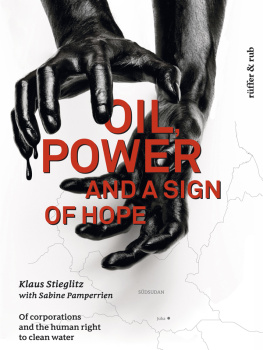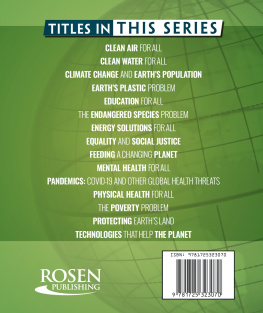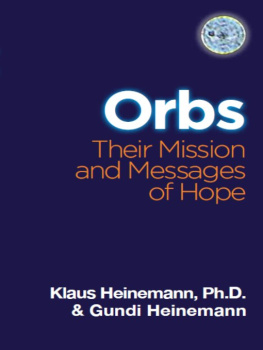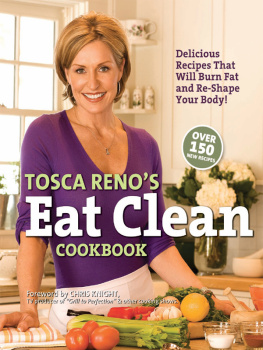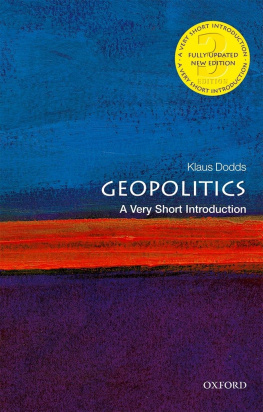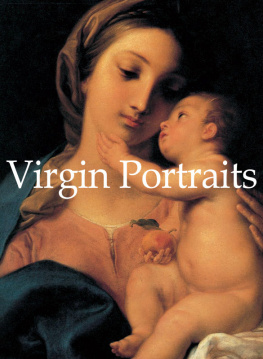PROLOGUE
Powerless people
July, 2012. Sarnico, a town in northern Italy. Throngs of paparazzi. George Clooney is shooting a commercial for a luxury version of Mercedes-Benzs E-class of cars. The commercial covers the stars determined attempts to get a close-up on the car. This entails him initially grabbing an aquaplane, which then follows a silver-colored model of the car as it winds its way down the spectacular road hugging the banks of the Lago dIseo. Clooneys next step is to grab a speedboat, which flies him up close to the object of his desire. Great chase scene. The commercials message: the new model of Mercedes causes this womanizer to mobilize all of the well-known determination and charm that he normally displays when wooing an exquisitely attractive woman.
Clooney relaxes during the breaks between shooting by enjoying a bit of joshing with his fans, and by bringing food to the members of the crew. He lets himself be photographed while doing such. The worlds media snap up the photos.
Clooney makes an announcement during the day of shooting. He is going to auction off his 2008 Tesla Signature 100 Roadster, which has only 1,700 miles on its clock. And he is going to donate the proceeds to a project of assistance in Sudan.
August, 2012: $US 99,000. Thats the amount raised by the auctioning of Clooneys four years old car. The funds go to the Satellite Sentinel Project, which Clooney helped found and which operates in Sudan.
*
It was sometime around 60 A.D. that the Emperor Nero decided to split off two of his centurions and their centuries (companies) from his legions stationed in Romes province of Egypt, and to send them south. The missions purpose was to scout the unknown lands stretching down to the sources of the White Nile, and to claim them for Rome, which would thus gain new, sub-Saharan lands. Nero was greedy for the gold supposed to be lying around for the picking in these lands, which comprised the ancient kingdom of Meroe. It was located in what is todays Sudan. In the interests of maximizing his cost-benefits ratio, Nero gave his scouting party a clearly-defined mission: find out whether or not these unknown lands had any resources at all worthy of exploitation.
Overcoming and surviving unimaginably-challenging obstacles, the Roman legionnaires managed to reach Lake Victoria, the source of the White Nile. One of these obstacles was so challenging that it put an end to any visions of lasting conquest of the region: the Sudd. This gigantic, contiguous expanse of wetlandsnearly 6 million hectares in sizeis located in Southern Sudan, and is one of the largest of its kind in the world. The Sudd is comprised of the White Niles countless arms and of the land between them. These streams are too shallow to be navigated by ships. The rest of the region is covered by such aquatic plants as papyrus and other reeds. These preclude any attempts at wading through it.
Seneca, the Roman historian, bequeathed us a telling description of the Sudd wetlands. It constitutes the first firmly documented mentioning of the region. Sudd stems from the Arabic Sadet, which means barrier or dam.
*
In May, 1847, Johannes von Mller, a researching botanist from southwestern Germany, embarked upon an expedition in Africa. He was accompanied by his secretary and trusty helper Alfred Brehm, who was the son of an ornithologist. The expedition started in Egypt. Its plan was to traverse the entire continent of Africa, and to research its fauna in the process. In January, 1848, von Mller and Brehm arrived in Sudan, which was under the control of the Ottoman Empire in those days. The Ottoman had expanded their sway over the Sudan from their base in Egypt ten years previously. Brehm made a copious amount of notes about and sketches of the people encountered in his travels. Brehm was especially moved and distressed by the slave trade, which was widespread in the Sudan of those days. Especially distressing to him was the exacting and unscrupulous treatment of the slaves by the Europeans living in the Sudan. During Brehms sojourn in the Sudan, he was witness to the arrival of slaves from a march that had started in the south of the region. The state of the dark-skinned humans, who were member of the Dinka ethnic group, especially bothered Brehm: It was a ghastly sight, one that no words suffice to describe. It remained in my soul for weeksas the epitome of horror. It took place on January 12, 1848.
In his notes, Brehm described the cycle of violence and counter-violence prevailing in Africa. According to Brehm the former stemmed from the whites, who employed slavery as one of their means of ruthlessly oppressing the people of Sub-Saharan Africa. This oppression produced a widespread hostility towards whitesan attitude that Brehm found completely understandableamong the Africans. This hostility prevented von Mller and Brehm from proceeding upon their travels in Southern Sudan. As he noted resignedly: The hunting for slaves bars the way for researchers seeking to explore the central lands of Africa.
*
Daniele Comboni was a Catholic priest. In 1857, he embarked upon his first trip to Africa. He was accompanied by five other missionaries. Their trip brought them to Southern Sudan, where he experienced first hand the misery and the enslavement of Africans. These experiences led him to found a mission. Combonis main objective was to put an end to slavery. His approach to missionary work sounds like it could have been formulated today: Enabling Africa to rescue Africa.
Combonis missionary work proved to be a huge success. The ethnic groups living in Southern Sudan are cultures highly open to the Christians visions of divinity. The effects have proved lasting. Southern Sudan is still the realm of nature-based religions and of Christianityin contrast to northern Sudan, in which Islam predominantly prevails.
*
June 11, 1955. 4 pm. The start of the famous 24 Hours of Le Mans. The weather is hot and humid. A thunderstorm is in the offing as shown by the dark clouds crowding the horizon. The sun is still, however, shining over the race course.
More than 200,000 spectators are lining the 13 kilometers of the race course, which is, on non-race days, comprised of normal-use roads. Case-in-point: the long straightaway. It is part of the road connecting Le Mans and Tours. The fastest cars reach speeds of nearly 300 kilometers an hour on the straightaway. Not surprisingly, this is the most popular place from which to watch the race. These Populaires are cheap. Thats because fans have to stand. The Populaires are located in front of the more expensive bleachers. The former offer, however, the best views of the starting positions and the pits. The crowd in the Populaires gets to hear the yelling of the race managers and the mechanics, and gets to sample the odor of fuels and of abraded clutches and brakes. The crowd is comprised of thousands of people, all thronging the race course, from which they are separated only by a nearly one meter-high fence made of bales of hay and of planks. The crowd is enjoying itself. The race is being covered on-site by the worlds media, many of which are reporting live from Le Mans. Among the media are film teams, which are shooting full-color, Cinemascope news flashes for the weekly reports shown in cinemas.


